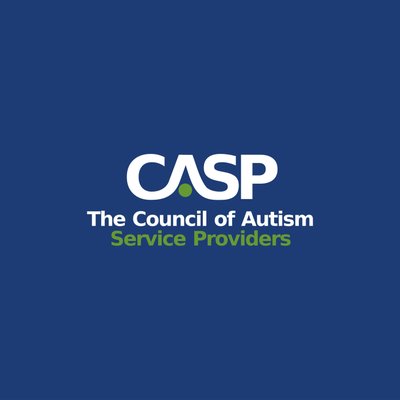Attention deficit in children with autism is a complex issue that requires careful consideration. Children with autism often exhibit attention deficits alongside their primary diagnosis. Research indicates that the prevalence of attention deficits in individuals with autism can be considerably higher than in the general population.
The relationship stems from the neurological differences associated with autism, affecting areas of the brain responsible for attention, focus, and impulse control.
That said, attention deficits can manifest in various ways, including difficulty maintaining focus, easily becoming distracted, and challenges with organization and completing tasks.
4 Factors Contributing to Attention Deficit in Children with Autism
Several factors contribute to attention deficits in children diagnosed with autism. These can be broadly categorized into neurological, environmental, and behavioral influences.
They’re as follows:
- Neurological Differences: Variations in brain structure and function are common in children with autism. These differences can affect the brain’s executive function, which is essential for planning, decision-making, and regulating attention.
- Sensory Sensitivities: Many children with autism experience heightened sensitivities to sensory stimuli. This can lead to difficulties in filtering out distractions in their environment, making it hard for them to focus on specific tasks.
- Anxiety and Stress: Children with autism may experience higher levels of anxiety, which can interfere with their ability to concentrate. Situations that may seem ordinary to others can overwhelm these children, leading to increased anxiety and, consequently, attention deficits.
- Educational Environment: The learning environment plays a crucial role in a child’s ability to focus. Environments that are not tailored to the needs of children with autism can exacerbate attention-related challenges.
Understanding these contributing factors is essential for parents and caregivers to support children facing attention deficits in conjunction with autism effectively.

How to Identify Attention Deficit in Children with Autism
Identifying attention deficit in children with autism can be complex due to the overlapping symptoms of both conditions. Understanding the signs and challenges involved in diagnosis and assessment is crucial for parents and caregivers.
Children with autism who also exhibit attention deficit may display a variety of signs. Some common symptoms may include:
- Difficulty sustaining attention on tasks or activities
- Excessive movement or inability to stay still
- Acting without thinking, leading to disruptive behavior
- Struggling to comprehend or execute multi-step directions
- Trouble organizing tasks and activities
These symptoms can manifest in various settings, including home and school. Recognizing these behaviors is key to understanding their impact on learning and daily functioning.
That said, diagnosing attention deficit in children with autism presents several challenges. Factors contributing to this complexity include:

Given these challenges, a thorough evaluation is essential for accurate identification and effective intervention.
Strategies for Managing Attention Deficit
Managing attention deficit in children with autism requires a multifaceted approach. Effective strategies include behavioral interventions, educational support, accommodations, and various therapy options.
Behavioral interventions focus on modifying specific behaviors and improving attention skills through structured methods. These can include interventions such as social skills training, ABA therapy, and a token economy.
These interventions can be tailored to individual needs, enabling better management of attention deficits.
School environments can be particularly challenging for children with attention deficits. Implementing the right support and accommodations can enhance their learning experience. Creating a structured and accommodating environment is essential for supporting children with autism in their educational journey.
At the same time. Various therapy options can help children manage attention deficits and improve overall functioning. These therapies can be beneficial in conjunction with other strategies, such as:
- Occupational Therapy: Focuses on developing skills for daily living and improving sensory processing.
- Cognitive Behavioral Therapy (CBT): Addresses negative thoughts and behaviors to improve focus and self-regulation.
- Speech Therapy: Aids in enhancing communication skills, critical for social interactions.
Selecting appropriate therapies can greatly assist children in coping with attention deficits while fostering personal growth. For parents and caregivers looking to understand more about the challenges children with autism may face, our article, “A Look at Regression in Toddlers with Autism,” provides valuable insights. It explores the signs of regression and offers guidance on how to support toddlers through this stage, helping them navigate developmental changes effectively.
Empowering Individuals with Autism
Understanding oneself and advocating for personal needs are essential skills that empower individuals with autism. By fostering self-awareness and self-regulation, they can navigate their environments more effectively and communicate their needs better.
Self-awareness involves recognizing one’s thoughts, feelings, and sensory experiences. For children with autism, developing this skill can enhance their ability to manage attention deficits. Several techniques can support this development, such as:
- Mindfulness: Practicing mindfulness can help individuals focus on the present moment and increase awareness of their thoughts and feelings.
- Journaling: Writing about daily experiences and emotions may assist in identifying patterns related to sensory processing and behavior.
- Visual Supports: Utilizing charts or images to represent emotions and actions can aid in understanding feelings and self-regulation strategies.
- Role-Playing: Engaging in role-playing scenarios can help practice social interactions and responses to various situations.
Implementing these techniques encourages children to recognize sensations and emotions, which can lead to improved self-regulation.
Advocacy is also vital for individuals with autism to express their needs and preferences effectively. Teaching advocacy skills can lead to improved self-esteem and better outcomes in educational settings. By fostering both self-awareness and advocacy skills, individuals with autism can better understand their experiences and ensure their needs are met within their communities.
Final Thoughts
Attention deficit in children with autism is a multifaceted challenge that stems from both neurological and environmental factors. Identifying these difficulties can be complex due to overlapping symptoms, but early recognition and thorough evaluation are key.
With the right strategies, children can learn to manage their attention more effectively. At Golden Care Therapy, we provide personalized ABA therapy with a deep commitment to helping each child thrive in their own unique way. Whether you’re looking for an ABA therapist in Indiana, New Jersey, New York, Georgia, or Florida, we bring high-quality, compassionate care to families across these states. Ready to take the next step in supporting your child’s development? Contact us today to learn more about how we can help. We’re here to walk this journey with you every step of the way.
Sources:



